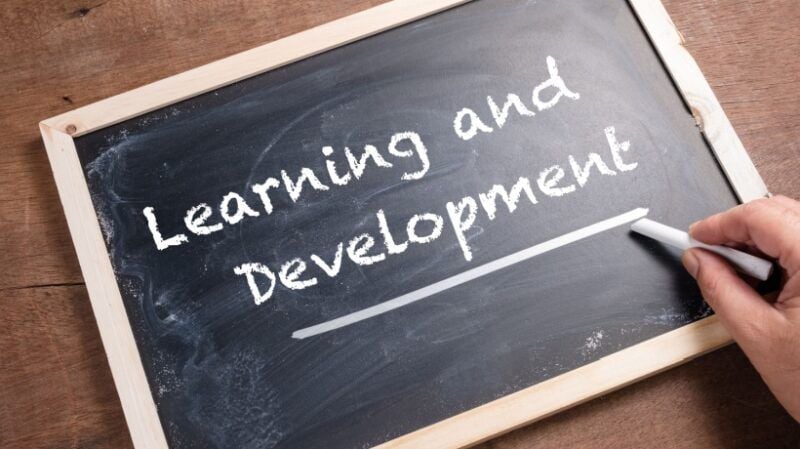
The New Era Of L&D: The Heart Hasn’t Transformed
Let me share something I have actually been seeing up close: Discovering and Advancement (L&D) isn’t simply developing, it’s transforming at a pace most of us haven’t experienced before. Think of it. Five years back, we were talking about on the internet discovering as a support system. Today, it’s the foundation of how companies reskill, keep, and empower their workforce. Functions are changing, skills are frequently being redefined, and advancement strategies look nothing like the ones we built a decade ago.
As an L&D professional, I typically hear leaders ask: “What are the most functional developments I can try for my workforce? Exactly how do I even understand what skills to prioritize?” If you have actually been duke it outing these concerns, you’re not alone. Allow’s unbox what’s occurring and where you can focus your energy.
1 From Job Duty To Abilities: The Shift That Changes Whatever
We made use of to design learning around static work summaries. Today, job does not fit nicely right into those boxes any longer. Organizations are relocating towards skills-first techniques. Why? Since abilities are real money of development.
- Skill taxonomies and structures (like those constructed into modern LMS platforms) are assisting businesses recognize what’s missing today and what will certainly be critical tomorrow.
- Inner talent marketplaces are arising, where employees are matched to tasks based on abilities as opposed to task titles.
- For you as a leader, this means reskilling isn’t a side job; it’s your best retention technique.
2 AI Is Right here, Yet It Needs Guardrails
AI is no more advanced; it’s already inside your LMS and learning approach, nudging learners with tailored recommendations. And when done right, it feels like magic.
- Customized paths
AI assesses student habits and recommends courses straightened with occupation goals. - Time-saving automation
Admin jobs like enrollment, reporting, and responses loops are coming to be simpler. - Skill presence
AI-powered control panels give leaders clarity on workforce preparedness.
But here’s my caution: AI is just as solid as the information and governance behind it. Wonder, experiment, yet likewise ask vendors difficult concerns about openness, prejudice, and data safety and security.
3 Skills-Based Understanding Satisfies Human-Centered Layout
While modern technology can scale, human-centered layout makes it stick. The advancements I’m most excited about are the ones that mix technology with compassion:
- Microlearning and nudges
Little, just-in-time bursts of understanding that regard students’ hectic schedules. - Knowing in the flow of work
Integrations with MS Teams, Slack, or CRMs where staff members currently invest their time. - Career-linked discovering
Advancement plans that directly link skills discovered to promotions or new opportunities.
These aren’t simply “nice-to-haves.” They’re becoming expected.
4 Immersive Learning Is No Longer An Experiment
Online Truth (VIRTUAL REALITY) and Enhanced Reality (AR) were when buzzwords. Today, they’re functional tools, along with much-utilized simulations, scenario-based learning, and gamification, specifically for remote and global groups.
- Think of a frontline worker exercising safety and security methods in VR, risk-free.
- Or a brand-new supervisor stepping into a gamified simulation to practice leadership conversations.
These immersive approaches increase retention and self-confidence, especially in high-stakes duties. And the good news? Expenses are reducing, making them more achievable for a broader range of organizations.
5 Partnership Is The New L&D Superpower
Here’s the reality: in the new era, L&D can’t succeed in a silo any longer. The most impactful programs I’ve seen were born from solid collaboration between human resources, IT, and business leaders.
- HR provides the lens of ability and culture.
- IT ensures systems incorporate flawlessly.
- Magnate connect learning to strategy and growth objectives.
When these voices come together, finding out comes to be an organization driver, not just a human resources function.
If You’re Not sure Regarding Skills Or Concerns, Beginning Right Here
Several leaders inform me, “I’m not also clear concerning which abilities matter a lot of.” That’s completely reasonable. The landscape in this new age of L&D is loud. Here’s a basic strategy I suggest:
- Pay attention to your business approach
What’s altering in your market, product, or consumer expectations? - Take a look at your labor force data :
Where are people leaving? Which teams are having a hard time? - Beginning tiny with pilots
Select one area, like digital fluency, leadership readiness, or customer experience, and run a concentrated program. Action, find out, scale.
Remember: you don’t need to do everything simultaneously. Even little, willful relocations can create large ripples in society and efficiency.
Last Thought: The Heart Of L&D Hasn’t Changed
Yes, the devices, duties, and methods are changing dramatically. However at the heart of it, also the brand-new age of L&D is still about opening human capacity. As CLOs and L&D leaders, our job is to produce settings where individuals really feel capable, supported, and influenced to grow. Whether via AI-driven personalization, immersive simulations, or just much better conversations in between managers and teams, the objective continues to be the same: to help people thrive to make sure that companies can thrive.
If you’re curious regarding which advancements can work best for your labor force, start discovering. Try something tiny, gauge the effect, and don’t hesitate to iterate. Due to the fact that in 2025, the most effective L&D leaders won’t be the ones who did every little thing, they’ll be the ones who relocated with intention.